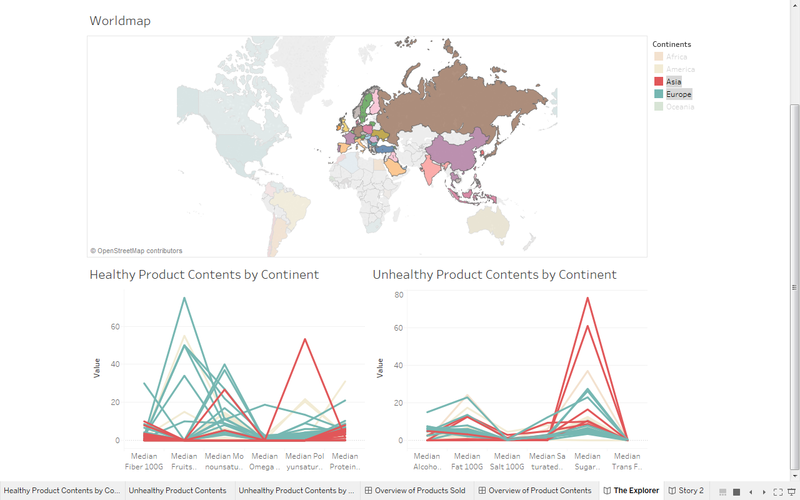IS428 2016-17 Term1 Assign2 Timothy Tan Swee Guang
Perception and Data: How the media influences perceptions of consumption patterns around the world
Contents
Abstract
Problem and Motivation
With the ubiquitous presence of the media in everyday life, it is easy for us to form conscious or unconscious perceptions of different societies based on what the media portrays it to be. For example, the media always depict European meals as fresh and healthy (I.e. Italian Pastas, Paella from Spain, Greek Salads or fresh fish from the Netherlands) whilst associating fast-food or unhealthy foods to countries like the US or Canada. But is this really true? Or is the media truly biasing our perceptions?
This study aims to explore how media can influence our perceptions on how we perceive differing countries consumption patterns. Through the use of food facts, the study attempts to proxy how media bias our views on how healthy or unhealthy a country truly is through its advertisements on what they eat.This study will proxy products availability in a country as an indicator of what people eat in that country.
Health Indicators
Healthy Measures (per 100g)
- Fiber
- Fruits, Vegetables and Nuts
- Monounsaturated Fat
- Omega 3 Fat
- Polyunsaturated Fat
- Proteins
Unhealthy Measures (per 100g)
- Alcohol
- Fat
- Salt
- Saturated Fat
- Sugars
- Trans Fat
Approaches
Data Preprocessing
1. Removed "Null" Product Names
2. Treated "Countries_en" column
- Delimited multivalued cells
- Stacked Columns
3. Treated "main_category_en" column
- Removed names with ":" by formula
4. Standardized "Product_Category_D1" to start with lowercase to resolve double-counting issues
5. For the measures, only attributes that seem to be good predictors of health were kept.
- Data points without any measures were excluded (22,026 rows were filtered out due to all 26 measurements missing [this 26 includes the measures of interest]. Leaving 39,996 rows left for analysis)
6. Organized Groupings
- Grouped Countries by Continents
- Grouped Measures by Folders
Research Questions
- What products are the different countries consuming?
- What product contents are the different countries consuming?
- What are some of the patterns of products available in each country?
- How healthy or unhealthy are these products?
- Which continent eats the healthiest?
- Are there different patterns of consumption between Europe and America as showcased on television?
- Are these patterns align to what media portrays them to be?
- If Europe and America's consumption patterns differ, what are they consuming differently? What are the reasons for these differences?
Link to Interactive Dashboard
https://public.tableau.com/profile/timothy.tan5930#!/vizhome/TableauA2/TheExplorer
Analysis
Healthiest Continent
Policy Recommendations
Tools Utilized
- Excel 2013 for data preparation
- SAS Enterprise Guide for data preparation
- JMP-PRO for data preparation
- Tableau for visualization
References
http://www.webmd.com/diet/obesity/features/skinny-fat-good-fats-bad-fats#1
http://statisticstimes.com/geography/countries-by-continents.php
